Given that huge innovations are being made in edtech each week, it’s exciting to speculate on what devices the average British school will be using in a few years. Dominic Norrish, Group Director for Technology at United Learning, looks at what developments are likely to take place, making three main predictions.

If you are looking for a quick way to destroy your credibility and give people an additional opportunity to sneer at the depth of your ignorance, speculating on how technology may change education is probably the most effective method available to the average blogger.
Still, here goes…
What is innovation, exactly? Teacher of French and Japanese Rory Gallagher discusses how teachers and companies affect education-innovation.

We are already 14 years into the 21st century, and most of us are just catching up with existing technology – like the internet, social media, touchscreens, digital files etc. We are starting to discover the applications of these inventions in our lives, and realising which are the important innovations, which are simply gimmicks, and which are merely improvements on existing systems. But have our values really changed? In this post I will attempt to provoke and challenge our conceptions of innovation, and I hope to raise more questions than I can answer.
There are amazing innovations being implemented into schools daily, but what are the downsides of this? As with Elliot Simmonds' piece on Friday, Shiny Things director Mat Peterson has some concerns about the expansion of edtech - namely, the lack of physical actions that these modernisations require.
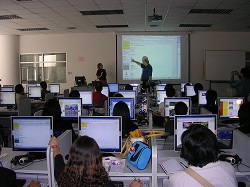
While the use of devices in one-to-one classrooms is hugely beneficial to education, the potential impacts of abandoning handwriting in favour of keyboards have largely been overlooked. Early formative years are essential for sensorimotor development and a complete shift to computer-based teaching could be detrimental to a child’s learning.
New research from the Stanford University School of Medicine shows that areas of the human brain do become specialised for the specific recognition of numerals. Meanwhile, several studies have shown that the human brain's specialised ability to recognise letters and numbers is strengthened by sensorimotor experiences with those characters, specifically through handwriting practice.
Schools like Yew Tree Primary in Sandwell are at the forefront of education innovation - this school in particular loves to create videos. However, it was only when headteacher Howard Martin and his colleagues decided to adopt TrilbyTV that the medium was fully-realised in Yew Tree, with students and teachers able to broadcast their films anywhere on-site.

Yew Tree Primary School in Sandwell, West Midlands have undertaken a new technology initiative powered by edtech specialist Trilby’s new product. The Apple Regional Training Centre, who are keen on all KS2 pupils having their own iPads for learning, have begun using TrilbyTV, a simple-to-use video sharing app and online storage service that allows students to share video projects with each other and around their school. This development is part of a collaboration going back several years, with Trilby having catered for many of the school’s technological needs.
For the past few years, the school has been looking for a solution to use, share and securely store the videos staff and pupils have created. Yew Tree have dabbled with videos in the past, but have lacked the proper infrastructure to show the movies as-and-when they were needed. The use of TrilbyTV, however, gives the school the ability to show pupil-made recordings at any location within the school with the minimum of planning. Within the first few weeks of using the product, the children have already produced over fifty videos within the school.
Recounting her experience of teaching special educational needs SEN pupils overseas, Carol Allen explains how technology can provide life-changing benefits for pupils with disabilities, and why we should never neglect the resources available to us in Britain.

As featured in the March edition of our magazine.
Over the past few years, I have worked at many educational establishments in the United Kingdom and abroad. My area is communication and access to learning for all - from those with profound and multiple learning difficulties to those who are academic and able but have a specific or transitory learning barrier. Unsurprisingly, my work in other countries has brought me into contact with some strikingly different approaches and attitudes to special educational needs (SEN).
In Albania I came across a slow start to the provision of education for some children with disabilities. Historically, in this country, such children were put through the same system whatever their disability. This had been the case for a blind man whom I met. Intelligent, articulate and a wonderful singer, he carried his few possessions - a cassette tape player with two cassettes and his cigarettes - with him at all times, having no safe place to store them.
Given how important and useful digital devices have become in education, industry expert Chris Wiseman gives specific reasons why BYOD is so paramount.
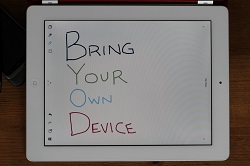
As published in the September 2013 edition of our magazine.
Schools have and always will be faced with tough decisions when it comes to new technology: Which platform to purchase? What codes and practices to adopt?
Perhaps the most difficult choices come during the early phases of emerging trends, such as Bring Your own Device (BYOD), a mobile learning framework whereby students are allowed to use their own tablets or smartphones for educational purposes on the school network. It is not unusual for digital natives today to own multiple devices for different situations and activities. Smartphones, tablets, notebooks, laptops, and e-readers are all valuable learning tools for schools to tap into. Whilst most schools would like to be able to provide a device for every student, in reality it may be unfeasible, particularly in financially unstable times.
There is no denying that digital technology is now part and parcel of our everyday lives and increasingly teachers are making use of it, not just as a personal management system, but as part of their everyday lessons. This is all good, of course, but there can be a rather piecemeal approach to digital technology in schools. There is an awful lot of good practice going on all over the country and still further afield; one look at Twitter tells me this. However, not all teachers realise the power and potential of digital technology.
As a teacher of Modern Foreign Languages at Surbiton High School, Kingston Upon Thames, Assistant Principal José Picardo is an important part of the teaching community. As head of Digital Strategy at the school, he’s very keen to make sure that technology is implemented correctly in the classroom. He gives his thoughts on the latest Network.Ed piece.
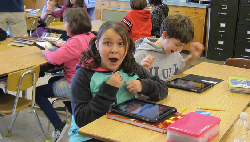
Last September I started a new role as Assistant Principal at Surbiton High School. My brief is the school’s digital strategy. Now, I’m not the first to be appointed to lead a school’s digital strategy – there have been Directors of E-Learning or Directors of ICT elsewhere for some years, but I am one of the first to be appointed directly to the Senior Leadership Team with the specific purpose of devising and implementing a digital strategy to support teaching and learning. And I won’t be the last. Here’s why…
Research shows that lessons are most effective when they are structured thus:
Many of you will be looking to integrate more technology in your classroom this new academic year, but unsure at what software and apps to actually go for. Here is a list of Mark Anderson's top free edtech tools for assessment, recording and sharing video and audio, creating posters and presenting learning.
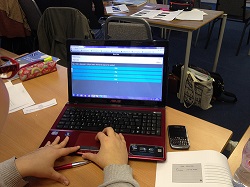
E-learning or using technology to support learning comes in many different shapes and sizes.
I’m always being asked to give advice and ideas on different online tools or iPad apps that can help with learning in the classroom. It’s always a challenge to balance the needs of the activity, with the skills of the learners and often too the greater challenge is to raise the confidence of the teachers.
I often hear from teachers about how they want to achieve more effective learning using technology, but often don’t have the software resources to achieve them, which is often due to finances. This article aims to give you my top free online tools to support learning in the classroom.
Photo credit: Danny Nicholson
Drawing from his experience as a Headteacher, Mark Steed describes the main impacts that ICT and the internet is having on education in schools, from the benefits of 'anywhere, anytime' learning and increased student collaboration, to the burdens of keeping students safe online and regulating access to the internet.
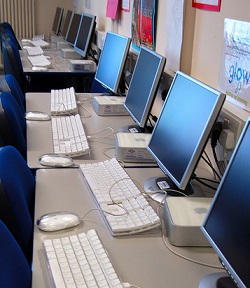
Great claims have been made over the past twenty years about the impact that ICT would have on teaching and learning, most of which only succeeded in disappointing.
However, at long last, the combination of reliable ICT networks, affordable equipment, innovative educational software and an increasingly ICT-literate body of teachers means that we are beginning to see ICT making a real difference to the day-to-day education in independent schools.
The impact of new technologies is being seen in every area of school life: academic, pastoral, co-curricular and in school administration.
Martini Learning - Widespread access to new technologies has been one of the most important catalysts of the shift in emphasis from classrooms being about teaching, to them being about learning.

A community-driven platform for showcasing the latest innovations and voices in schools
Pioneer House
North Road
Ellesmere Port
CH65 1AD
United Kingdom